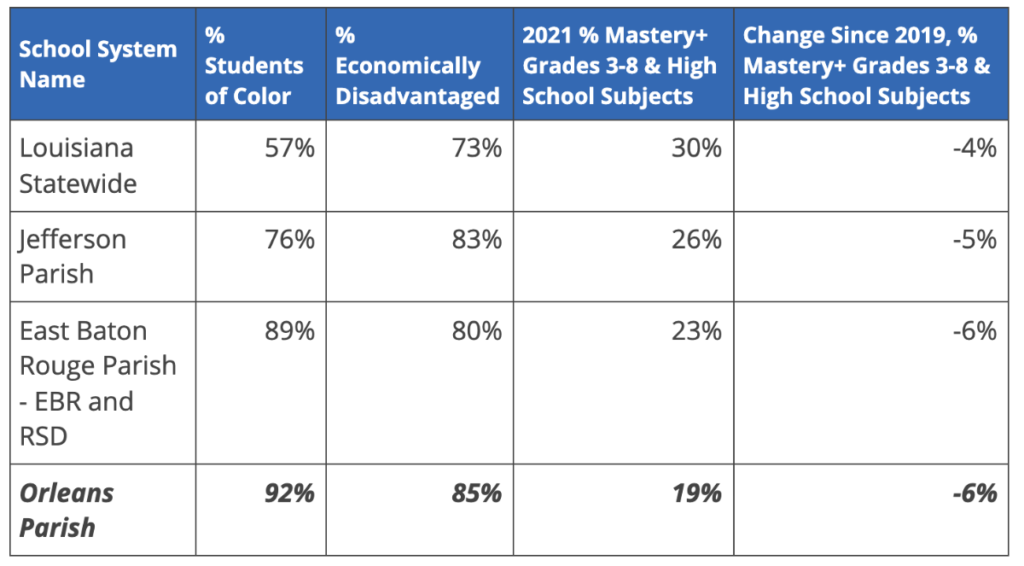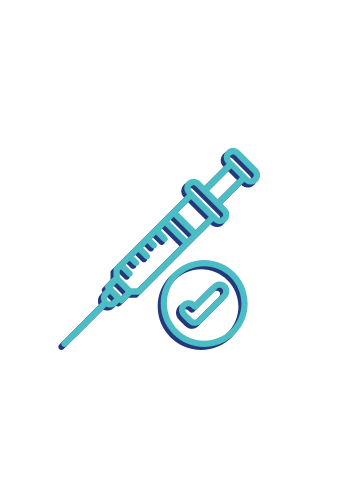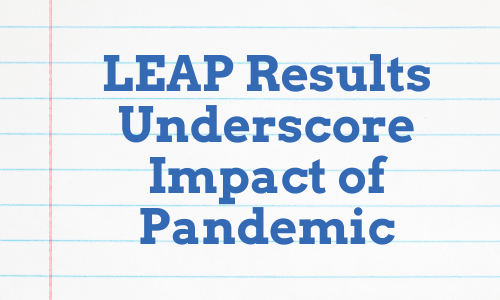LEAP Results Underscore Impact of Pandemic
Unprecedented year sets a new baseline for assessing student performance
Yesterday, the Louisiana Department of Education (LDOE) released statewide scores for the Louisiana Educational Assessment Program (LEAP). LDOE usually releases these scores annually, but they did not last year, as they waived the testing requirement in Spring 2020 due to COVID-19.
This meant that last spring, students took the LEAP again for the first time since 2019. As we expected, in New Orleans and the state at large, the percentage of students who demonstrated grade-level mastery of state standards dropped. The challenges of the pandemic clearly impacted learning, and we will be addressing that impact for years. The 2021 LEAP scores will have to serve as a new baseline going forward, and we should measure growth from there.
Schools and teachers did everything in their power to address the new and existing barriers our children faced, but those barriers were especially high this year. Students were learning to use new technology. They were in and out of in-person classrooms. They faced trauma and losses all around them. More families struggled with the food insecurity and access to housing that so many of our students have always faced. We had an incredibly active hurricane season. All of this made it harder for our children to focus on schoolwork.

Despite the logistical difficulties of administering a test last spring, in New Orleans, approximately 95% of students who were supposed to take the LEAP did so. If we look at the scores of students in grades 3-12 across English Language Arts, Math, Science, and Social Studies subjects combined, we see that 19% of students mastered grade level standards. This is a drop of 6 percentage points from 2019.
Students scored lower statewide as well, though the drop in percentage of students scoring mastery and advanced was smaller overall (4%) than it was in New Orleans. We know that, because of systemic racism and inequities, lower-income communities and communities of color were hit harder by the pandemic. New Orleans has a higher percentage of students who LDOE describes as “economically disadvantaged,” and a higher percentage of students of color than the state average; we expect New Orleans’ larger drop was the result of the greater impact COVID-19 had on them and their families this year. Other large parishes with similarly large percentages of students of color and students who are economically disadvantaged, such as East Baton Rouge and Jefferson Parish, had similar drops.

These scores may also have been affected by whether or not a student learned in-person. LDOE has highlighted this trend statewide. Unfortunately, given the high rates of COVID-19 infection and death in New Orleans (at times among the highest nationwide), and the lack of a vaccine for much of the year, in-person learning was not always a viable option in New Orleans. Our district prioritized safety and health and was cautious about sending students and educators back to school, waiting until they were confident it could be done safely. Our youngest learners were allowed back in buildings starting in September, and more students gradually returned to their buildings as the year went on, but returned to remote learning at times when local infection rates rose.
New Orleans Public Schools (NOLA-PS) and our school leaders, educators, and staff are doing everything in their power to ensure students can safely learn in person during the 2021-2022 school year. This will allow children to access the resources they need, have in-person time with their teachers, and grow socially and emotionally alongside their peers. To ensure this remains a possibility, NOLA-PS has strict safety guidelines in place for all schools, as they did last year. Schools had a mask mandate in place before the state indoor mandate was put in place on Monday, August 2nd. Schools have also launched a campaign to get students vaccinated, and will offer COVID-19 testing for students and staff each week this year.
Many of our teachers are already vaccinated. That process began last spring; on Thursday, February 18, the Governor announced school staff could begin receiving the vaccine. By Tuesday, February 23, New Orleans educators were getting their shots. By the end of the second week of vaccinations, over 3,000 educators had their first dose. Now, students have begun to get the vaccine, too. Just last month, the entire football team at John F. Kennedy High School got vaccinated together to set an example for the rest of their school and city.

We know our students and teachers worked incredibly hard this year, and we also know that the impact of COVID-19 on our community is profound. The LEAP results make that clear. Unfortunately, the pandemic is not over yet. With every new vaccination, though, we get a little closer to that day. It will take our whole community stepping up to protect our children in the best way we currently know how—following precautions, getting vaccinated, and wearing our masks.
At NSNO, we are proud of our students and our educators. We believe in them. It was a privilege to support them last year, and we are proud to continue that work going forward. These are frightening times, and so much is changing each day, but NSNO’s support for our children, educators, and schools will not waver.
